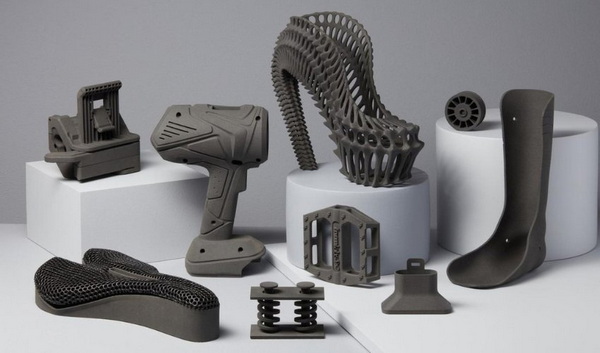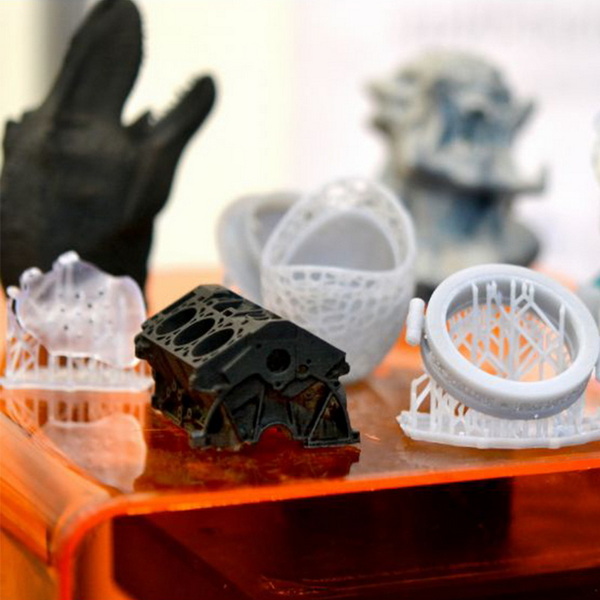
Views: 222 Author: Amanda Publish Time: 2025-10-13 Origin: Site








Content Menu
● Understanding Your Project Needs
● Evaluating Manufacturer Capabilities
● Quality Assurance and Certifications
● Additional Services to Consider
● Frequently Asked Questions (FAQ)
>> 1. What materials are commonly used in 3D print prototypes?
>> 2. How do I know if a 3D print prototype manufacturer provides high-quality parts?
>> 3. Can 3D printing be used for both prototypes and small production runs?
>> 4. What should I provide to a 3D print prototype manufacturer to get started?
>> 5. How important is communication during the 3D printing process?
Choosing the right 3D print prototype manufacturer is a critical decision in the product development journey, serving as the foundation for translating ideas into tangible realities. A well-executed prototype allows designers, engineers, and business leaders to evaluate form, fit, and function before proceeding to mass production. Given the complex landscape of 3D printing technologies, service providers, and material options, it is essential to select a manufacturer that aligns with your project requirements, timelines, and quality standards.
This article offers a detailed overview of what to consider when selecting a 3D print prototype manufacturer, providing actionable insights to help businesses, including international brands, wholesalers, and manufacturers, source the best OEM services. Whether your project requires rapid prototyping, precision CNC machining, or batch production, understanding these factors will help ensure your investment yields the best results.

Before engaging a 3D print prototype manufacturer, the first step is to clearly define your project's scope and goals. Are you looking for a functional prototype to test mechanics, a visual model to secure stakeholder buy-in, or a production-grade part? Different applications demand different manufacturing technologies and materials.
3D print prototypes can be created using various methods such as stereolithography (SLA), selective laser sintering (SLS), fused deposition modeling (FDM), and resin-based printing. Each of these has unique strengths in terms of detail, strength, surface finish, and speed. Knowing exactly what you need helps narrow down manufacturers with the right technical expertise and equipment.
Not all 3D print prototype manufacturers have the same level of technical capability or range of services. It is important to review their:
- Technology portfolio: Does the manufacturer offer multiple printing technologies? Can they handle complex geometries and fine details? This flexibility ensures they can adapt to different project requirements.
- Material options: Materials range from various plastics to metals, each with unique properties. Leading manufacturers provide access to a wide spectrum of materials suited for different mechanical or aesthetic needs, including durable, flexible, or heat-resistant options.
- Precision and tolerances: Confirm that the manufacturer can achieve the dimensional accuracy your project demands. High precision is essential, especially for functional prototypes that will undergo testing or assembly with other parts.
- Finishing services: Some manufacturers offer post-processing services such as polishing, painting, plating, or assembly, allowing you to receive a more market-ready prototype in one place.
Quality is a non-negotiable factor in prototype manufacturing. A reputable 3D print prototype manufacturer should have robust quality control processes, including:
- Inspection protocols to verify dimensional accuracy
- Material certification and traceability
- Repeatability in batch productions to ensure consistency
- Industry certifications such as ISO 9001 that demonstrate commitment to quality standards
Verifying these aspects protects you from costly errors and ensures your prototypes represent your design intent accurately.

Effective communication with your 3D print prototype manufacturer can significantly impact the success of your project. Look for:
- Responsive customer service teams knowledgeable about 3D printing
- Ability to provide design consultation, helping optimize your files for manufacturability
- Transparent quoting processes including lead times, pricing, and potential challenges
- Regular updates throughout the printing and post-processing stages
Manufacturers that collaborate closely with clients often deliver superior results and reduce turnaround times.
While cost is important, the lowest price does not always mean the best value. Consider a manufacturer that offers competitive pricing aligned with the quality and service level you require. Fast lead times are often critical in prototyping to keep product development on schedule. Balance cost with speed and quality—ideally, choose a partner who can deliver timely prototypes without sacrificing standards.
Some 3D print prototype manufacturers integrate additional capabilities such as:
- CNC machining for high-precision parts
- Sheet metal fabrication
- Injection molding for pilot production runs
- 3D scanning and reverse engineering
- Mold making services
A one-stop-shop can streamline your workflow and reduce supplier management overhead.
Choosing the right 3D print prototype manufacturer involves evaluating a combination of factors including technical capabilities, material expertise, quality assurance, communication, pricing, and additional services. Understanding your project requirements and partnering with a manufacturer that offers flexibility, precision, and robust support will help ensure smooth project execution and a prototype that truly represents your design vision. By carefully selecting your manufacturing partner, you empower your product development journey to be more efficient, cost-effective, and successful.

Common materials include various plastics such as ABS, PLA, nylon, and resins, as well as some metal powders for selective laser sintering. The choice depends on desired strength, flexibility, heat resistance, and surface finish.[1][2]
Look for quality certifications like ISO 9001, strong inspection processes, and reviews or case studies demonstrating consistent accuracy and reliability. Request sample parts if possible.[1]
Yes, many manufacturers offer rapid prototyping alongside small to medium batch production using 3D printing or complementary processes like CNC machining and injection molding.[3][1]
Typically, 3D CAD files in formats like STL or STEP are required. Detailed specifications regarding materials, tolerances, and finishing preferences help ensure accurate quotes and quality outcomes.[2]
Communication is vital to address design feasibility, troubleshoot issues, and keep timelines on track. Good manufacturers provide consultation and regular progress updates.[2][1]
[1](https://www.hlhprototypes.com/choosing-the-best-prototype-manufacturer/)
[2](https://resources.cadimensions.com/cadimensions-resources/how-to-choose-the-right-3d-printing-service-provider-for-your-business)
[3](https://www.protolabs.com/resources/guides-and-trend-reports/rapid-prototyping-processes/)
content is empty!
How Vacuum Mold Casting Compares to Silicone Mold Casting for Precision Parts
Vacuum Mold Casting vs. Resin Casting: Key Differences You Should Know
Vacuum Mold Casting vs. 3D Printing: Choosing the Best Rapid Prototyping Method
Best Vacuum Mold Casting Services for Precision Manufacturing in 2025
Top Vacuum Mold Casting Manufacturers Delivering High-Quality Prototypes
Best Practices from Leading Vacuum Mold Casting Companies Worldwide
Top Vacuum Mold Casting Providers for Custom Batch Production
How to Choose the Right Vacuum Mold Casting Service for Your Product